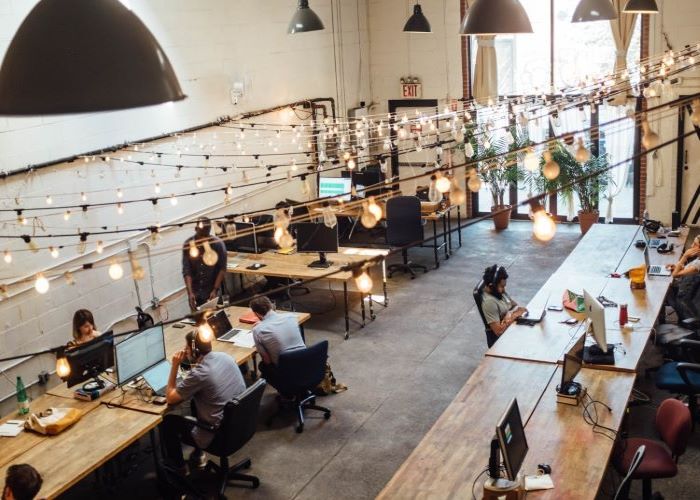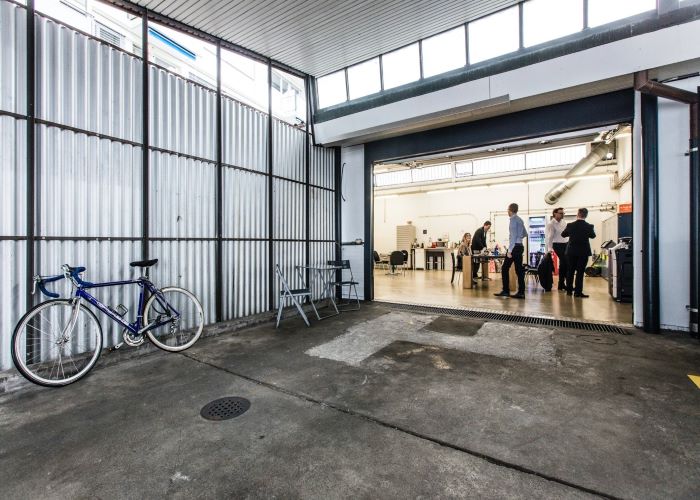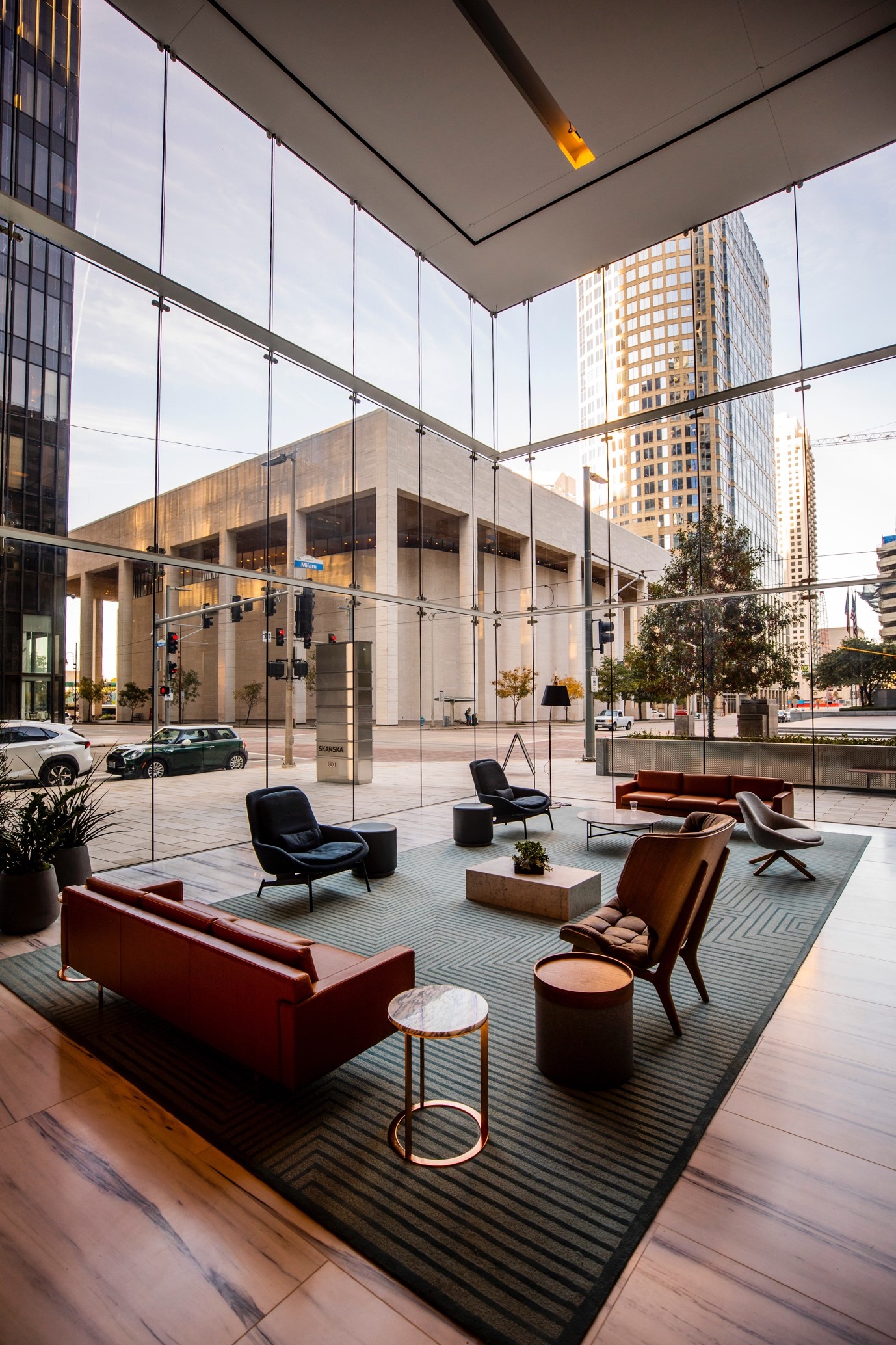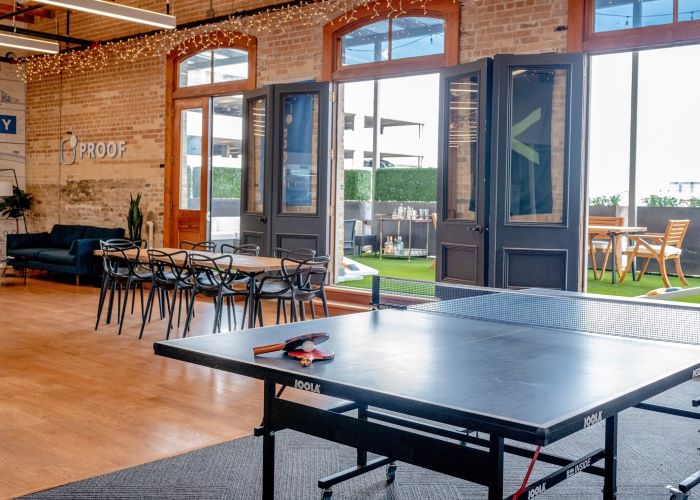
Headlines: Office Designs for the Digital Nomad
For the past two years, the world has been plunged into a state of lockdowns, work-from-home situations, and restrictive movements due to the Covid-19 pandemic. Corporations, which previously maintained a strict “office presence required” company policy have been forced to roll out creative strategies to allow employees to work from home and monitor their hourly contributions while trying hard to maintain high work productivity. For digital nomads or freelancers, working away from the stifling ‘comfort’ of an office space is business-as-usual, yet many still require a safe, cozy, and convenient environment to complete their tasks. With cafes and co-working spaces closed during the pandemic, digital nomads have become quite accustomed to working from their own abodes. Now, as vaccinations are being widely administered, sparking the herd immunity complex, governments are slowly lifting movement control & border restrictions, restaurants are opening and companies have begun to once again require their employees to return to the office despite unequivocal proof that working from home produces the same, if not more, productivity for workers. With standard operating procedures preached constantly for the last year or so, corporations and co-working spaces will require that extra umph to be able to entice employees and digital nomads back to their premises.
The co-working concept first made an appearance in 2005, but has existed decades earlier since Neuberg’s introduction of the concept in the early 90’s. Then in 1995, Berlin’s C-Base founded the first official co-working zone, coined (at the time) as a hackerspace. In 1999, 42 West 24 delivered the first flexible desk system for teams and individuals. To date, co-working spaces have evolved exponentially to offer attractive perks, facilities and amenities for clients, each topping the next – from games rooms to dormitories – a new strategy piggy-backed off the old needs to coalesce to offer a twenty-first century corporate offering. .
Also, with the evolution of co-working spaces, corporate offices have also made a move to steer clear of typical cubicles and office pantries to offer open-floor concepts and cafeterias to workers.

Now, however, it’s imperative that corporate offices and co-working spaces or what were previously called ‘hackerspaces’ evolve to not only attract digital nomads and freelancers, but also entice employees back to the office.
Among the physical features that can be adopted into the office is an open floor concept with cozy nooks scattered around the space to allow a small amount of privacy for individuals or team discussions. Gurgaon’s AirBnB in Delhi introduced micro-neighborhoods inspired by its properties around the world with conference rooms and corners that transport visitors to Kashmir, Goa and Texas. This allows visitors like digital nomads to not necessarily feel like they’re overseas but provide them a private space that’s curated for their comfort.

Biophilic areas along with outdoor workspaces have become a growing trend in offices and co-working spaces. Aside from providing an alternative location to sit down and complete tasks, outdoor workspaces give a new sense of freedom away from the stuffiness of indoor offices and artificial air. Biophilic areas with vertical gardens, minimal water features and added nature elements are a sustainable practice of allowing digital nomads or employees the opportunity to experience a new sight, smell and air within an indoor setting. Not to be confused with a sustainable or green design, the biophilic concept is about introducing nature into the workspace. As work is more associated with the indoors, employees rarely have exposure to sunlight or the natural environment, especially if a building utilizes dual-paned, double-glazed windows that filter heat from the sun.

A common offering in corporate offices is the pantry; a small room or corner on a single level that provides the basic necessities for refreshments and nothing more. Nowadays, co-working spaces and offices are introducing cafes and cafeterias for their employees that provide breakfast, lunch, tea and dinner, so visitors have a nice place to meet their clients, employees can slink away for a quick breather and grab a special coffee order or digital nomads can always have a place to find a meal without worrying about the next best place to have lunch.

Lobbies have always been non-functional spaces or merely public waiting areas with an information counter and strict security. Nowadays, however, office lobbies have grown into a space employees or visitors go to in order to socialize and establish human connections for their colleagues. The size and curation of lobbies plays a big impact on how it will utilized.

Small lobbies are merely halfway points while large lobbies creating a more engaging and welcoming feel to the office building. As these offices are designed with more amenities and facilities, the basic function of a lobby is expanded to become an area for work, meetings and the occasional greeting. Lobbies are becoming targets for additional amenity space which are often used as a buffer between the office and the outside world. As restrictions are lifted once again and companies are requiring their employees to return to the office, lobbies will once more become empty. However, companies need to understand that the lobby is the first image of what your company represents, whether it’s a closed secret or a welcoming workplace. To utilize lobbies to their full capacity, companies or co-working spaces can provide comfortable chairs and tables expecting full use, charging stations, cafes and public facilities that can be rented by anyone. You’ll be doing a great service to the public if your lobby provides basic office facilities to the public when a random person walks in with an emergency and requires a printer. Cafes or pop-up coffee shops are also an added advantage to entice digital nomads or the public to fill up your lobby with vibrancy.
Additionally, a dedicated concierge service is also a bonus. Placing someone to cater to the needs of visitors like a hotel will provide benefits to not only the company brand but also to the building. Private booths, presentation halls and video conferencing rooms with digital services could be impactful to the office space as digital nomads spend a lot of time communicating with clients through video platforms.
As companies are struggling to bounce back from the lackluster financial year brought on by the global pandemic, profit-making is a necessity. There are spaces in the lobby and the overall building that can be rented out to the public for additional income. This is provided that the office has building-wide fast internet connectivity which can also be rented out for a small profit.
Digital nomads are made up of expatriates or traveling freelancers. A quick, easy and reliable Visa renewal system could be the main attracting feature for any office as this added service, aside from being additional income for the company, will also benefit the overall businessperson, foreign freelancer or expatriate to visit the building.
Extra perks office buildings or co-working spaces can explore to become more market competitive include providing a gymnasium, nap space, mail service and entertainment room in their building. Every small added feature is an advantage in a fast-paced, growing industry.

With the shifting work environment brought on by the Covid-19 pandemic, companies and large corporations need to evolve past requiring employees to be in the office. Research has shown that remote working and four-day work weeks not only boost productivity but reduces costs. By leveraging, evolving and expanding existing office space not only can entice workers back into the office but also attract digital nomads to rent space in company buildings and contribute to profits.


